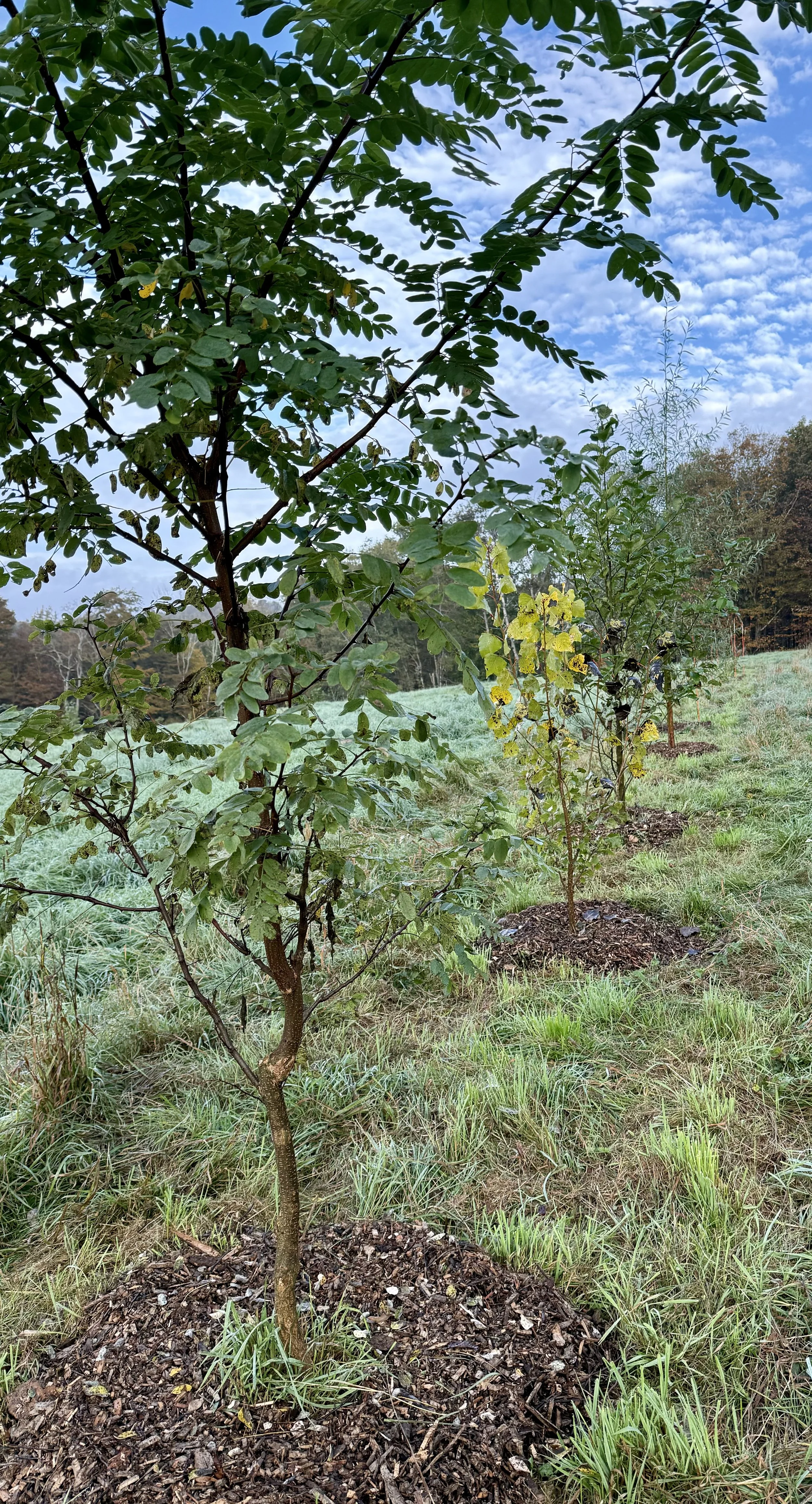
Our Vision
We farm to improve human and environmental health by reconnecting agriculture with nature. Small ecologically-conscious farms provide a more resilient and responsible food system, supporting a new way of life for farmers and eaters alike.
Regenerative Agriculture
Regenerative farming harnesses the power and complexity of nature to restore our ecosystem while producing delicious, nutrient-dense food. It is not defined by a fixed set of practices but varies according to each holistic context. Tailored goals are set according to each farm, farmer and community. Regeneration is measured through progress against those goals using verifiable outcomes.
-

Holistic Management
Two Creek manages across the whole of the farm, following the Savory Institute’s approach. Our holistic context integrates economics, environment and farmer quality of life. Livestock management emulates a wild herd and is integrated into the wider ecosystem.
-

Animal Welfare
Animals are necessary for our ecosystem to function. We assess animal welfare according to American philosopher Martha Nussbaum’s Capabilities Approach, which is articulated so clearly by Joel Salatin as “respecting the pigness of pigs.” Our livestock enjoy choice, socialization, and play. Their main task is fulfilling their ecological functions. For example, our hogs root and till to open up new pasture, our sheep upgrade degraded pastures, and our cattle trample pasture and improve soil carbon. We keep our animals in family groups and practice delayed or natural weaning.
-

Silvopasture
Silvopasture integrates trees into grazing systems. We work this from both directions - thinning mid-stage forests to open up canopy and light for grazing, and planting trees into our larger pastures in tree lanes. Our tree lanes are planted on keylines to improve hydrology within uniform alleys for efficient grazing. Silvopasture offers livestock diverse nutrition, shade, and shelter and supports biodiversity and the small water cycle. Silvopasture also sequesters 10x more carbon than pasture alone.
-

Intensive Mixed-grazing
Management-intensive grazing uses high animal density on small paddocks. This allows full consumption of forage along with long rest periods. Multi-species grazing takes advantage of the different diets and preference of each each species, resulting in more diverse pastures with enhanced biodiversity.
-

No-till Market Garden
We avoid tilling in order to build carbon-rich living soils. Instead of plowing, we supplement our beds with compost, which slowly decomposes and rejuvenates the soil below. Instead of pulling our plants after harvest, we cut them off below the soil so the roots decompose and retain biomass and nutrients.
